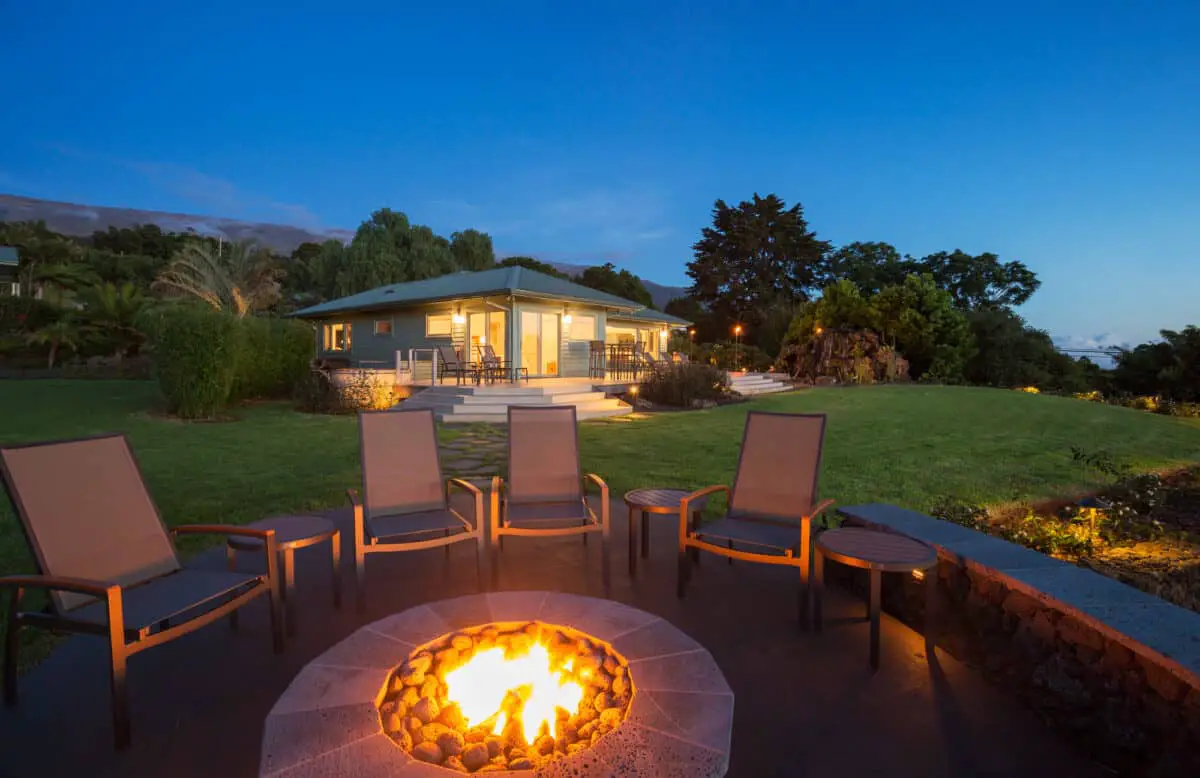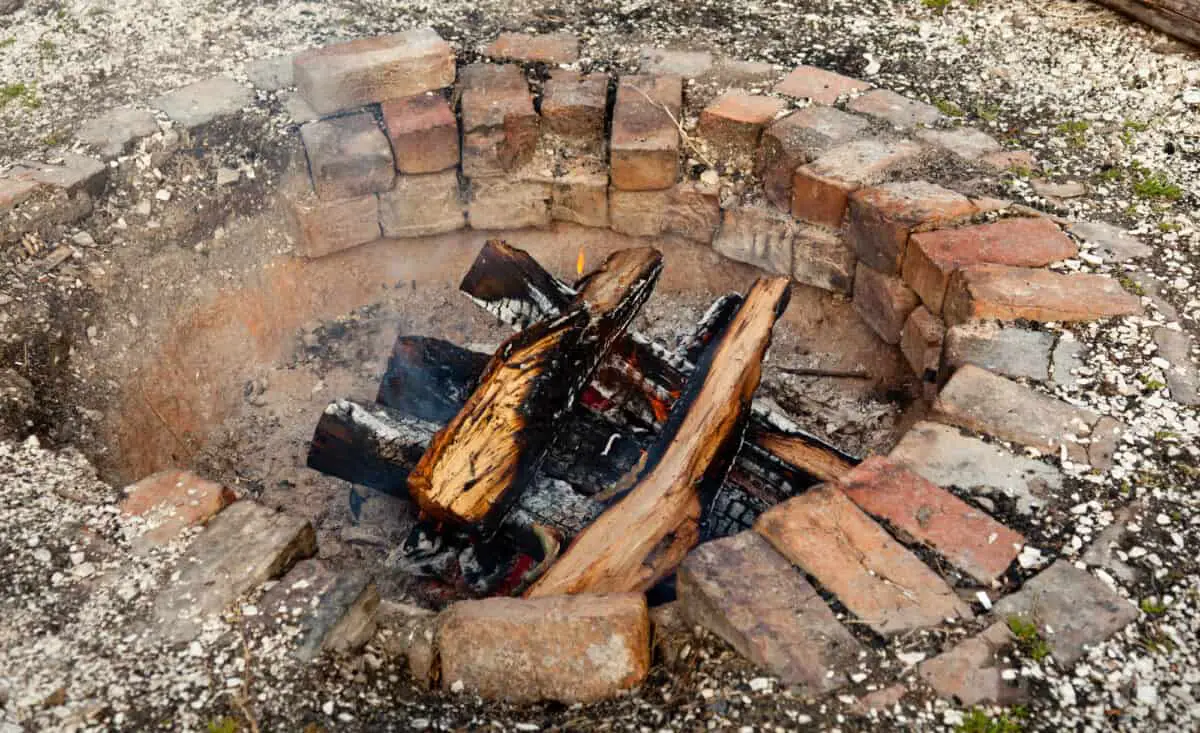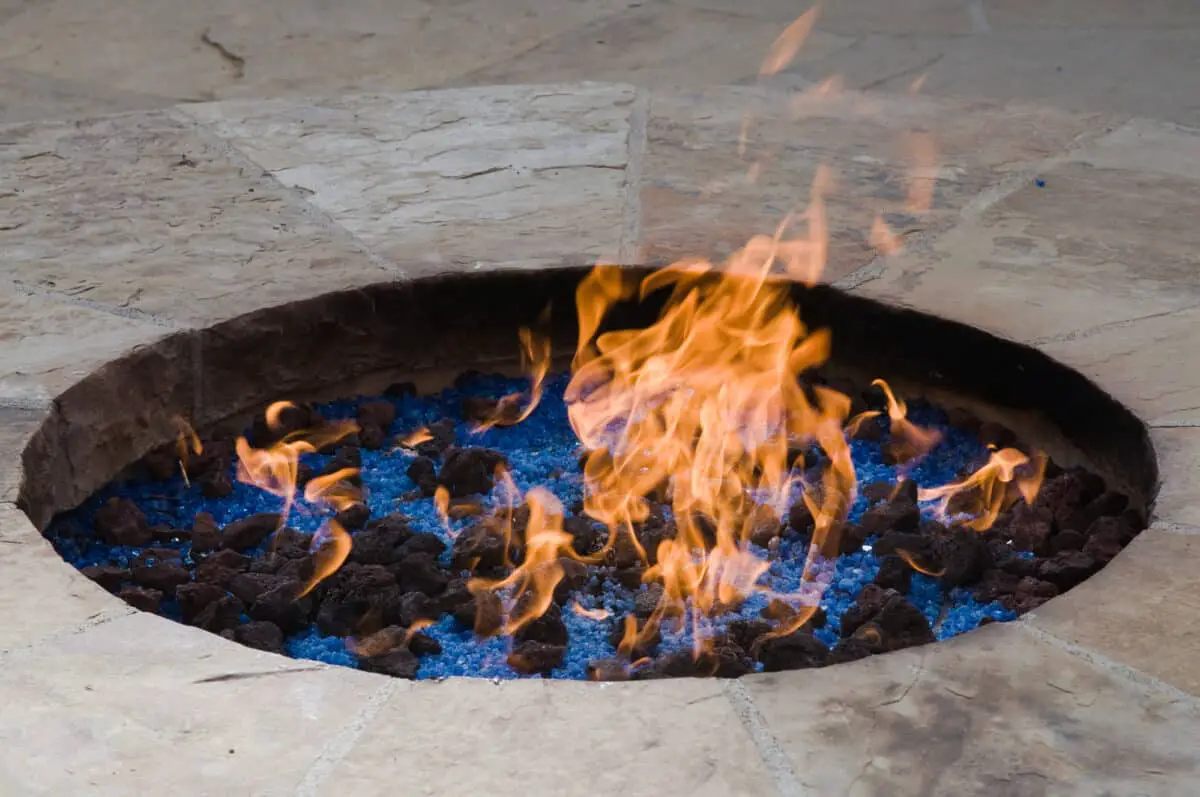Lighting your outdoor fire pit can be challenging if you haven’t done it before.
If you have a fire pit that uses firewood, the process of starting the fire is similar to a regular one, but with a few modifications.
Gas and propane-based fire pits, on the other hand, are more convenient but require a different lighting process.
Outdoor fire pits allow you to enjoy your outdoor living space in cooler seasons and enhance its aesthetics with a burning flame.
The process of lighting an outdoor fire pit depends on the type of pit being used.
In this article, we will provide you with a step-by-step guide on how to safely light two types of outdoor fire pits.
Related Reading: Essential Fire Pit Rules: 6 Smart Guidelines for Safety and Enjoyment

Table of Contents
Lighting Your Outdoor Fire Pit That Uses Firewood
Starting an outdoor fire pit that uses firewood is similar to starting a regular fire.
Step 1: Gather the Tinder, Kindling, and Firewood
The first step in lighting a fire is to gather three types of wood: kindling, tinder, and fuelwood. This can be challenging if you are new to starting fires.
- Tinder: This quick-burning element gets ignited before anything else and eventually helps get the fire going. It could be anything from newspaper to dry pine cones, dry leaves, etc.
- Kindling: This is part of the fire-starting process where small sticks and twigs, ignited by the fuel, continue to burn long enough for the firewood to catch fire.
- Firewood: These are the larger pieces of seasoned logs (with moisture content below 25%) that the kindling ignites. Once ignited, they will be the source of your actual fire.
Make sure your firepit has appropriate basing and use a firepit ring to prevent damage to surfaces.
Step 2: Position and Light the Tinder and the Kindling
Proper arrangement of gathered tinder, kindling, and seasoned firewood is essential to start a fire. The first and most accessible of the three to arrange is the tinder.
Place a small ball of tinder at the center of the fire pit.
Arrange the kindling in a teepee shape around the tinder, ensuring sufficient airflow.
Also, leave a wider gap at some point so it is easier to light later.
After arranging the kindling and tinder, use a long candle lighter to ignite the tinder from the gap in the kindling.
Wait until the kindling has ignited to ensure maximum fire safety.
Step 3: Position the Firewood
Once you’ve got your kindling going, place the seasoned firewood around it.
There are various methods to stack it.
You can construct a teepee stack similar to kindling, a pyramid stack with multiple vertically aligned layers encircling a teepee, or a log cabin stack with several horizontal layers, each perpendicular to the one before it.
You need to place enough firewood for the desired duration of the fire while also allowing for sufficient airflow between them.

You can ignite your firewood by adding more kindling or tinder. If you’re in a hurry, you could even add a small amount of kerosene or lighter fluid.
Be careful not to douse the wood with too much fluid.
When building a fire, add more firewood continuously to keep it burning as long as needed.
Step 4: Extinguish the Fire When You’re Done
When utilizing a fire pit with firewood, it is crucial to remember that it operates similarly to a conventional fire.
Unlike a gas fire pit, you cannot merely switch off the pit when you have finished using it.
You need to extinguish the fire to prevent it from spreading. Start by refraining from adding more firewood.
After the firewood has burned down to embers, it is crucial to extinguish them with either sand or water.
If you opt for water, ensure that you blend the embers thoroughly with the water to soak them entirely. Otherwise, there is a chance of accidental reignition.
Lighting Your Outdoor Fire Pit That Uses Gas or Propane
Gas-powered outdoor fire pits come in two types: portable models that use liquefied propane and models that connect directly to a natural gas line.
In either case, gas-based outdoor fire pits are a great option simply because you don’t need to keep adding firewood and there is little to no smoke.
Also, never use wood on a gas fire pit, as it can cause many problems and safety issues.
Light the Fire Before Turning the Gas On
Gas-based fire pits usually require manual ignition due to lack of automatic igniter.
Operating these fire pits is simple: light the fire before turning on the gas.
When lighting a fire, some gas gets trapped in pockets between the pit if the gas is turned on first. When you light the fire later, you may experience a small explosion.
In most cases, this will give only you a scare, but in rare cases, it could potentially injure you.
Lighting a gas-based fire pit is simple, but they are more prone to malfunctions than firewood fire pits.
It would be helpful to include troubleshooting tips.
Troubleshooting Guide: Can’t Get Your Gas Fire Pit to Start?
Experiencing ignition issues lighting your outdoor fire pit can be frustrating, especially when trying to enjoy it on your deck. Here are some common problems:
The Flame Keeps Going Out
There are a couple of possible reasons why a fire you started may keep dying out.
Firstly, where is your fire pit located? A strong wind may be extinguishing the flames.
If so, you could use some sort of guard or shield to prevent the wind from blowing into the fire pit.
One possible explanation for a furnace not turning on is a dirty or obstructed gas valve. To fix this issue, you can remove the gas line, clean it using a brush, and blow into it.
If the previously mentioned solutions do not resolve the issue, it is conceivable that the fire pit’s thermocouple may be malfunctioning.
The thermocouple serves as an electrode that controls the gas valve. If this is indeed the problem, it is advisable to enlist the aid of a certified technician to rectify the issue.
The Igniter Doesn’t Spark
Most gas-based fire pits lack an automatic igniter, which makes operation difficult. Gas pits that do have an igniter are easier to operate but prone to failures.
Gas-based fire pits with a pilot starter use a battery to create the spark. Ensure the battery is full and properly connected.

Related Reading: Fire Pit Deck Safety: Essential Tips to Consider Before Use
Conclusion
Gas-based fire pits are easier to operate than firewood-based fire pits and both are great choices for your patio.
Unfortunately, sometimes they are prone to failure. We covered this in our article along with troubleshooting tips.
Setting up a fire pit that runs on firewood demands more time and effort than other types of fire pits.
The procedure is akin to setting up a regular fire, initiating with tinder, kindling, and then firewood.
Nonetheless, once established, the firewood-powered fire pit is exceedingly reliable and improbable to malfunction.
I have a few firewood fire pits and enjoy building a fire on a chilly evening or preparing for marshmallow toasting.
Whichever choice you decide, having a fire outdoors can make a good experience great!
Enjoy living the outdoor life!!!
